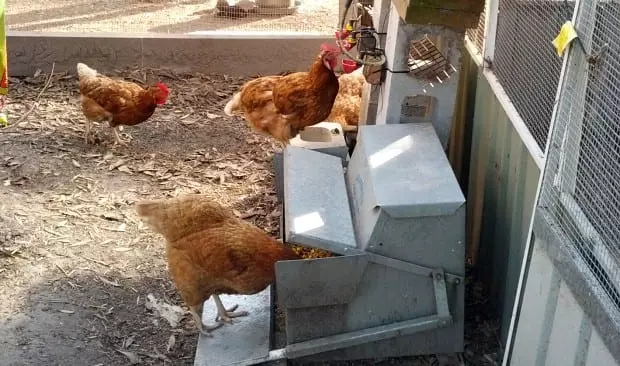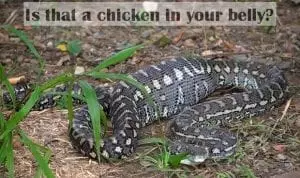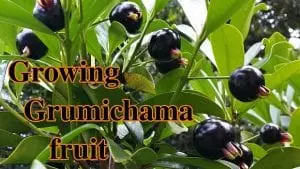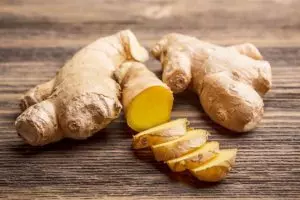Is feeding chickens as simple as feeding a pet cat or dog? Well, yes, and no. When people first start researching about what to feed their chooks they soon realise there are many answers. And, most of what I have read (and heard) is completely fine; however, there are some areas worth exploring more when deciding on what to feed backyard chickens.
Firstly, most cats and dogs (in an ordinary household) are kept for pets and unless the animals are kept for specific purposes like breeding or racing, food and diet are not major considerations. Sure, it's important our animals get good healthy food and exercise but most dogs and cats are perfectly well catered for by using products purchased from the supermarket and the odd scraps from the table.

Chickens using a feeder and drinker (feeding station image above)
Chicken diet is important!
With chickens, diet and what they eat are more important to consider than most other pets because:
-
Chickens lay eggs – the process of egg development and laying by a chickens body is energy and nutrient intensive. Therefore, for chickens to lay effectively and stay healthy, they need a diet high in vitamins, nutrients, and energy to replace what's lost daily; otherwise, not only will egg production be poor but the hens will become more susceptible to disease, parasites, and sickness.
-
Chickens need a varied diet – Chickens are constantly pregnant after-all, so a good diet is important and just as important is a varied diet. A chicken isn't a grass eating c
 ow it's an omnivore (an animal that feeds on both animal and vegetable substances); consequently, its body is adapted to eating a wide range of food to enable itself to successfully obtain all the micro-nutrients it requires. That's why free-range hens are so happy – not just because they can get out and be free to roam – it's mainly because they can hunt for micro-nutrients they know they need and they get these micro-nutrients through small insects, plants, grasses, seeds, and other naturally occurring foods.
ow it's an omnivore (an animal that feeds on both animal and vegetable substances); consequently, its body is adapted to eating a wide range of food to enable itself to successfully obtain all the micro-nutrients it requires. That's why free-range hens are so happy – not just because they can get out and be free to roam – it's mainly because they can hunt for micro-nutrients they know they need and they get these micro-nutrients through small insects, plants, grasses, seeds, and other naturally occurring foods. -
Chickens are one of our food sources – In my home, we eat lots of eggs and we always have done even years back when eggs were considered “bad” for you and high in cholesterol (this notion has since been proven to be total rubbish – I knew it). Anyway, because we eat the eggs (and sometimes the chickens for meat) we should be concerned about what our chickens eat because what they eat turns into eggs. Therefore, if our chickens are eating contaminated, medicated, or low quality feed, then we're eating it to and that's not good.
So, we care about what our chickens eat and we know they need a varied diet but what should we feed our respected little clucky friends?
Commercially prepared chicken feed
There are several standards and many types of commercial chicken feeds available and in most countries feed manufacturers have to conform to government regulations as to the quality of feed produced.
Chicken feed standards – Of course, feed standards for our animals are important (naturally), and it should mean all chicken feed on the market is quality controlled and meets a basic standard at least. Therefore, we should be able to trust the quality of even the cheapest bag of chicken feed. The three standards following may have different naming on different brands of feed, but essentially, common standards found on feed stockers shelves are:
-
Organic – If certified organic is stamped on a bag of chicken feed it means the manufacturer has gone through extreme lengths to ensure the food used in the feed is grown completely naturally without the use of artificial helpers like pesticides or fungicides. The whole process from the plant to
 the retailer is strictly monitored by an independent organic authority to give the consumer confidence they are buying a chemical free feed. However, organic certification is expensive and totally organic farms can also be expensive to run and these costs are passed onto the manufacturer and then consumer.
the retailer is strictly monitored by an independent organic authority to give the consumer confidence they are buying a chemical free feed. However, organic certification is expensive and totally organic farms can also be expensive to run and these costs are passed onto the manufacturer and then consumer. -
Premium – As the name suggests, premium feed are products the manufacturer has taken the time and effort to select and make. Consumers should expect premium chicken feed to contain quality ingredients like a higher protein percentage and better grains etc. What premium feed doesn't depict is organic; although, not being organically certified doesn’t necessarily make it likely chemicals will be found in the feed. In all probability, locally manufactured feed from reliable companies have been tested, withholding periods adhered to, and are top quality chemical free products.
-
Standard – Lower standard feeds made locally as stated should still meet food standards and are therefore a good option for people wanting quality feed on a budget. However, standard feeds generally have lower “good nutrient percentages” like less protein, and fibre. Also, the feed can have less variety or good grain mix and this can become a little “ho-hum” for the chickens. I guess you get what you pay for but in the end if money is tight then chickens will certainly eat what they are given albeit reluctantly.
Just a note on standards, I personally prefer to buy feed made in my home country (regardless of standards) because (although nothing is ever certain) I trust the standards from local manufactures; whereas, I'm less confident of the quality of some overseas chicken feeds, from countries with dubious regulations, and/or the quality control of those products on entry into my country.
Types of commercial chicken feed – Commercial chicken feed has so many varieties and in some cases the range of feed available depends on where you live. With the popularity increasing or chicken-keeping becoming “trendy” in the cities all sorts of gourmet feeds are emerging.
Chickens will eat all commercial feeds (manufacturers don't make pallets of chicken feed on a whim that their product will be eaten – it's been researched and proven); that said, chickens are individuals and every flock has slightly different tastes. Therefore, if the hens are given a choice of feeds or even good foraging conditions in lieu of a commercial feed, some chicken owners find their flock being very picky about what they eat.
Same too, if chickens have been raised from chicks to pullets to adult on a certain feed they may be reluctant to change eating habits when a new feed is introduced. And, just like other pets we can't always feed our chickens a high growth protein feed just because they love it either, because chickens (layers) need a balanced diet for optimal health not a diet to make them fat (unless it's the chicken and not the egg on the menu).

Mixed grain chicken feed (image above)
The list of feed below is by no means exhaustive; moreover, it's a list made through my experience and observations. Here's some of the more common commercial chicken feeds:
-
Pelletised feed – A complete feed (designed to be almost all the chicken eats). The feed is refined and turned into greyish/brown, uniformly sized pellets. It's usually a mix of grains,
 protein from meat or vegetable, and contains vitamins, minerals and particularly calcium for strong egg shells. Can also get pellets with special supplements like omega 3 to supposedly make the eggs healthier.
protein from meat or vegetable, and contains vitamins, minerals and particularly calcium for strong egg shells. Can also get pellets with special supplements like omega 3 to supposedly make the eggs healthier. -
Grains – Are complete grain feeds whole and cracked (some grains are lightly broken) these mixes are similar to above but in the form of grain. Mixes usually have two or three variations, for example: course mix (mostly whole grains); medium mix (even mix of cracked and whole grains).
-
Mash – Another complete feed, only, the grains are crushed and mashed up instead of whole.
-
Crumbles – Pelletised feed that is crumbled (broken up) for easier eating as some hens don't like eating the larger sized pellets. Also can be given as a complete feed, and is usually the main feed for younger birds but adult crumble is available too.
-
Supplementary grains/seeds – not used as a total feed on their own due to lacking in complete nutrients, although still great for a snack or bribe (to get them back into the pen). Supplementary feeds are things like packets of bird seed mixes and purpose-made chicken layer supplementary grain.
-
Medicated feed – Not really something most are going to be concerned about u
 nless you're breeding, nevertheless, everyone should know some feeds are medicated to help protect flocks from diseases like Coccidiosis (a serious intestinal disease). Unless you particularly need this type of feed, which most do NOT, pay close attention to the label and description on the feed packet because often medicated feed is sold next to non-medicated feed. Be especially careful when selecting crumble feed because this is commonly fed to chicks and pullets medicated but the identical non-medicated feed can also be fed to adult layers.
nless you're breeding, nevertheless, everyone should know some feeds are medicated to help protect flocks from diseases like Coccidiosis (a serious intestinal disease). Unless you particularly need this type of feed, which most do NOT, pay close attention to the label and description on the feed packet because often medicated feed is sold next to non-medicated feed. Be especially careful when selecting crumble feed because this is commonly fed to chicks and pullets medicated but the identical non-medicated feed can also be fed to adult layers.
What commercial chicken feed do I use? – If I may digress, my chickens absolutely love my quail feed. When it's quail feeding time, my chicken flock are always around begging for a few quail feed pellets… the little buggers. There are two main reasons why my chickens love the quail feed: firstly, quail feed is a game bird feed and thus it's high in protein (which chickens enjoy); and secondly, quail pellets are small and easy to eat at about half the size of a chicken feed pellet.

My chickens love the smaller sized high protein quail feed pellets (image above)
Yes, I do give my chickens a handful of quail feed occasionally as a treat but I don't routinely feed my chickens this high protein feed as it wouldn't be good for them. However, by observing my hens behaviour I have learnt what they like and what they're not so keen on. And through these observations, I have developed a feed mix that is not only good for them but it also has enough of the ingredients including feed size and texture to keep them happy.
Accordingly, my flock gets a mix of pelletised, crumble, grain, and mash chicken feed. Some may think I am having a bet all ways and that is certainly a fair assumption; however, I have also narrowed my feed down to particular product brands I know my hens enjoy and observing the flock's eating behaviour is what I'd encourage anyone to do if they are serious about giving their chickens the varied and exciting diet they deserve.
Some manufacturers will “advise” not to mix feeds or to limit other supplementary feed in order to maximise the benefit from eating their complete feed and if people want to follow those directions by the book that's fine – I won't.

Chicken feed mix of commercial whole grains and pellets – I store the feed in galvanised bins for easy access and to keep out the damp/wet and rodents (above image)
We don't like eating the same thing every day and it's the same with most chickens. Of course, I don't always have an even mix of every feed my chickens enjoy but I do try to stick with their variety of favourites when I can.
The final point I would like to make about commercial chicken feed is the opinion by some that commercial feed is not required and chickens can be fed on a diet of home scraps from the table and vegetable garden – I completely disagree. Laying hens will survive on a home scraps diet; however, they won't thrive (generally speaking) and I certainly recommend a commercial feed be available for chickens so they can graze on this reliable and complete food source for times when scraps aren't available or grubs/bugs are scarce.
Other feed for chickens
 On the subject of bugs and grubs, obviously commercial feed is only part of what chickens eat. Here is a list of (mostly obvious) feeds for chickens, which are non-commercial:
On the subject of bugs and grubs, obviously commercial feed is only part of what chickens eat. Here is a list of (mostly obvious) feeds for chickens, which are non-commercial:
-
Kitchen scraps – Salad off-cuts; breads (not too much); crushed egg shells; fruits; and other kitchen scraps like leftover freshly cooked fish or meats are fine to give to chickens. All foods still need to be good quality though, and a rule I use is – if I could eat the food without possibly getting sick then it should be ok for my chickens.
-
Vegetable patch and orchard fruit scraps – I often give vegetables and fruit to my chickens. Things like: bolting lettuces and other salads, cabbage off-cuts, blemished tomatoes, dama
 ged fruit with a grub inside, etc. As long as the fruit is not spoilt (ie rotten) it's a great food source for the flock.
ged fruit with a grub inside, etc. As long as the fruit is not spoilt (ie rotten) it's a great food source for the flock. -
Free range foods – Insects, grubs, worms, grasses, seeds, and weeds are all gold rated chicken feed. Whether it's from a paddock, around a property, backyards, purpose built chicken runs, or from a chicken tractor placed over a vegetable garden, free range feed for chickens are important for happy healthy hens.
-
Natural medication – Foods like garlic are said to be beneficial to help naturally control worms and other parasites in chickens.

My chickens enjoy an occasional feed of bolting lettuce (image above)
Food stuffs not good for chickens

The following list is just a short collection of food not good for chickens:
-
Old or rotten food;
-
Foods high in salt;
-
Processed food;
-
Raw meats;
-
Fruit and veg likely to contain chemical pesticides or fungicides; and/or
-
High starchy or low value scraps; for example peels like: potato or pumpkin skins.

Rotting fruits are no good for chickens either (left)
Finally, chickens aren't stupid either and they usually know what they can and can't eat when foraging (within reason) and I still prefer my rule of “will it possibly make me sick? If yes – then don't give to the chickens.”

Chickens are always eager to get out and go foraging (image above)
Conclusion
I've written enough already and I'm sure those who have read this article right through have had enough of chicken feed so I won't summarise.
Suffice to say, feeding chickens is mostly common-sense but if a constant supply of quality commercial chicken feed is always available and the scraps given are thoughtful, coupled with some occasional free ranging, then backyard chickens will happily thrive. And, a happy hen makes fantastic eggs and it's hard to beat a great egg… unless you have an egg beater – that wasn't even funny.
Feel free to use the comment section below and have your say (no email is required).
More about an intro into keeping chickens by going to Keeping Chickens (general outline).
Thanks for reading and thanks for your support.
Look, and see the Earth through her eyes
Mark Valencia – Editor SSM

 ow it's an omnivore (an animal that feeds on both animal and vegetable substances); consequently, its body is adapted to eating a wide range of food to enable itself to successfully obtain all the micro-nutrients it requires. That's why free-range hens are so happy – not just because they can get out and be free to roam – it's mainly because they can hunt for micro-nutrients they know they need and they get these micro-nutrients through small insects, plants, grasses, seeds, and other naturally occurring foods.
ow it's an omnivore (an animal that feeds on both animal and vegetable substances); consequently, its body is adapted to eating a wide range of food to enable itself to successfully obtain all the micro-nutrients it requires. That's why free-range hens are so happy – not just because they can get out and be free to roam – it's mainly because they can hunt for micro-nutrients they know they need and they get these micro-nutrients through small insects, plants, grasses, seeds, and other naturally occurring foods.  the retailer is strictly monitored by an independent organic authority to give the consumer confidence they are buying a chemical free feed. However, organic certification is expensive and totally organic farms can also be expensive to run and these costs are passed onto the manufacturer and then consumer.
the retailer is strictly monitored by an independent organic authority to give the consumer confidence they are buying a chemical free feed. However, organic certification is expensive and totally organic farms can also be expensive to run and these costs are passed onto the manufacturer and then consumer. protein from meat or vegetable, and contains vitamins, minerals and particularly calcium for strong egg shells. Can also get pellets with special supplements like omega 3 to supposedly make the eggs healthier.
protein from meat or vegetable, and contains vitamins, minerals and particularly calcium for strong egg shells. Can also get pellets with special supplements like omega 3 to supposedly make the eggs healthier.  nless you're breeding, nevertheless, everyone should know some feeds are medicated to help protect flocks from diseases like Coccidiosis (a serious intestinal disease). Unless you particularly need this type of feed, which most do NOT, pay close attention to the label and description on the feed packet because often medicated feed is sold next to non-medicated feed. Be especially careful when selecting crumble feed because this is commonly fed to chicks and pullets medicated but the identical non-medicated feed can also be fed to adult layers.
nless you're breeding, nevertheless, everyone should know some feeds are medicated to help protect flocks from diseases like Coccidiosis (a serious intestinal disease). Unless you particularly need this type of feed, which most do NOT, pay close attention to the label and description on the feed packet because often medicated feed is sold next to non-medicated feed. Be especially careful when selecting crumble feed because this is commonly fed to chicks and pullets medicated but the identical non-medicated feed can also be fed to adult layers.  ged fruit with a grub inside, etc. As long as the fruit is not spoilt (ie rotten) it's a great food source for the flock.
ged fruit with a grub inside, etc. As long as the fruit is not spoilt (ie rotten) it's a great food source for the flock. 











